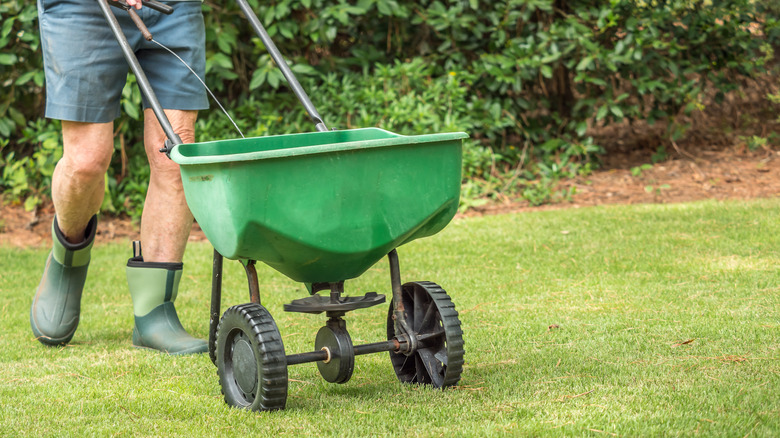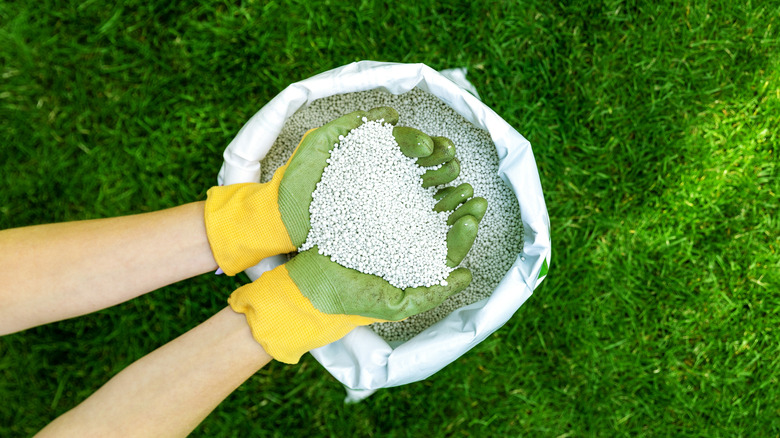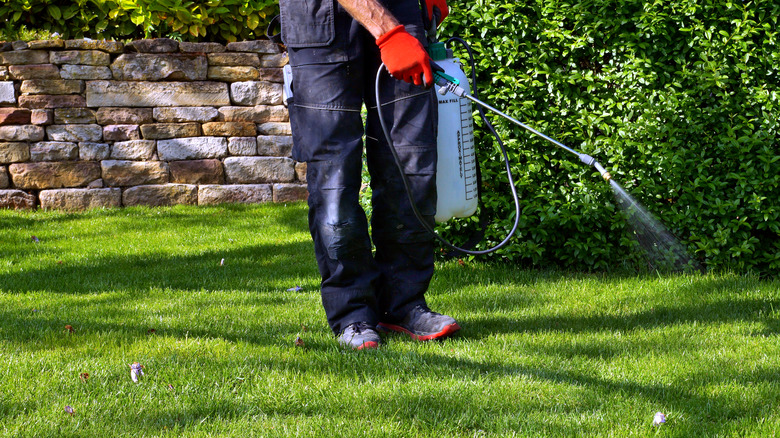Here's How Often You Really Need To Fertilize Your Lawn
When trying to improve the look of your yard, you probably will want to start by working on the color and thickness of the grass. Few things improve your home's exterior appearance quite as much as a beautiful, deep green lawn that's well-manicured. Using fertilizer and weed killer is a way to gain a lot of benefits with little time spent over the course of a year. Deciding how often to fertilize the grass can be a challenge, though, as you'll hear widely varying suggestions. In reality, adding granules once per year should help you see improvement, but most lawn care companies will recommend at least four feedings.
No matter how often you decide to do applications, it's important to avoid over-fertilizing your lawn. Concerns in this area apply primarily to applying too much in a single feeding rather than applying it too many times per year. However, if you use more product more often than the manufacturer recommends for whatever program you are following, you could cause damage from over-fertilization. Applying too much fertilizer at any one time can represent a significant threat to your lawn's health.
In other words, if you decide to follow a four-times-per-year program on your own or through a professional company, don't start applying more product in between the scheduled applications. This could lead to damage from over-fertilization, such as dried-out grass, brown patches, and a crusty grayish layer over the top of the soil.
Starting a DIY fertilizer program
You may want to try taking care of your lawn's feeding needs yourself rather than relying on a pro. It's typically cheaper to do this work on your own, but if you are extremely busy with activities in the spring and summer, you may decide to spend a little extra money is worth it to protect your free time.
With products readily available at hardware stores and other local retailers, you can easily begin a regular fertilization schedule by following the directions on these products. Measure your yard first so you know how much product to buy. Manufacturers sell bags made to cover a certain square footage. You'll need a spreader machine, too, that you can purchase at the same time. You can use the spreader for each feeding, so this is a one-time expense.
Most fertilizer manufacturers recommend four feedings as part of a DIY program. You'll perform applications in early spring, late spring, summer, and autumn. If you prefer the idea of just fertilizing once per year, the autumn feeding is the most important one for the health of the plants. They use the food in autumn to strengthen the roots and to gain strength to survive the winter. If you want to go twice a year, adding an early spring feeding should give you the best results. That's when the lawn is actively growing, and fertilizer gives the grass the extra boost it needs to shake off its winter dormancy.
Hiring a professional lawn care company
If you prefer the idea of letting someone else handle the fertilizing work for you, check with your neighbors to see who they use. You may be able to receive a referral discount, as the company can save time by working on two properties close to each other.
During the hiring process, ask the professional how many fertilizer applications they recommend. Some companies may want to apply feeding products as often as six times per year. Because these companies know how to use a precise amount of product and because some of them use natural fertilizers, they aren't going to damage your lawn by fertilizing it so often. However, you're also going to pay more for six visits from the pros than for two to four visits. You have the final say on just how many times your lawn receives fertilizer, so you can negotiate for fewer applications. However, some pros may believe so strongly in the results they receive with their programs that they will refuse to reduce the number of applications. You'll then have to decide whether to agree or to shop around for another option.
It's also possible that the pro will recommend four to six applications in the first year to help a neglected lawn become strong again. Once the plants establish themselves and look healthy again, the pro might be more willing to drop back to two to four applications going forward.


